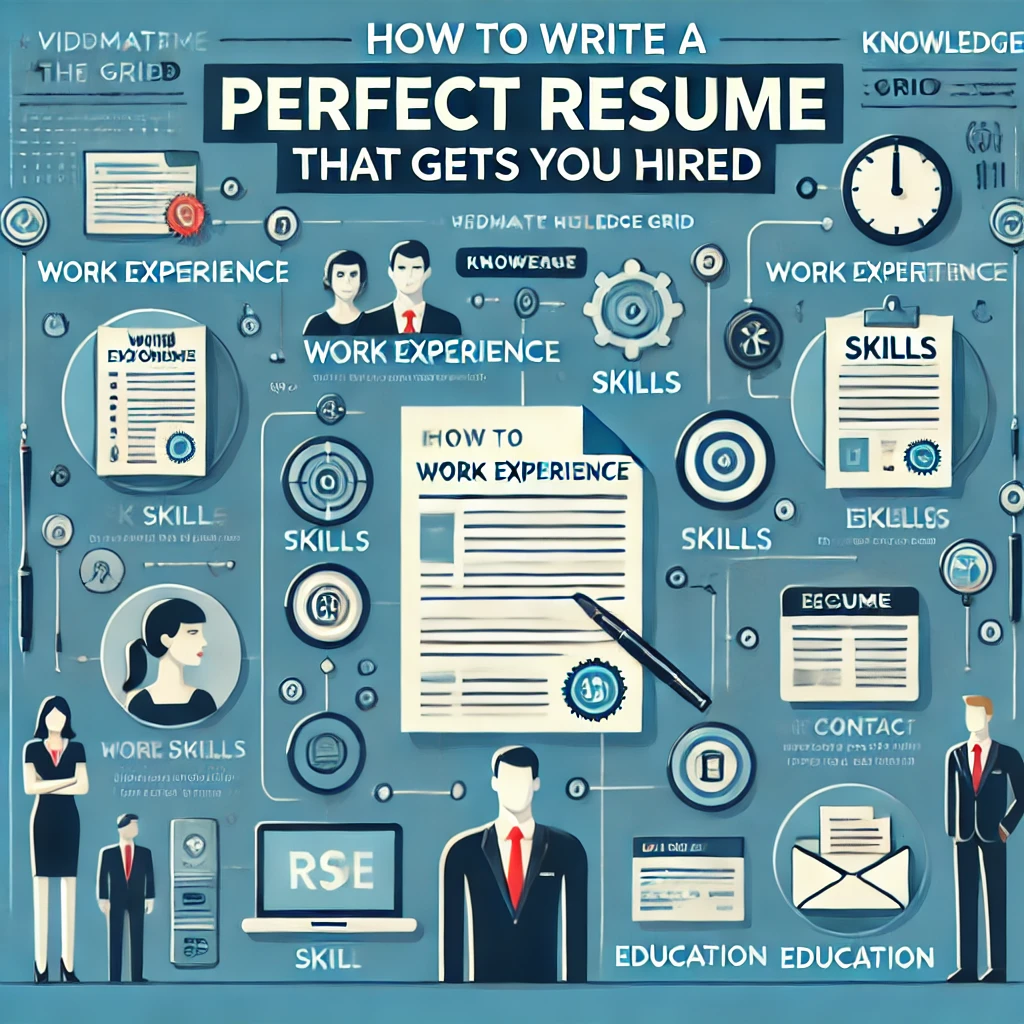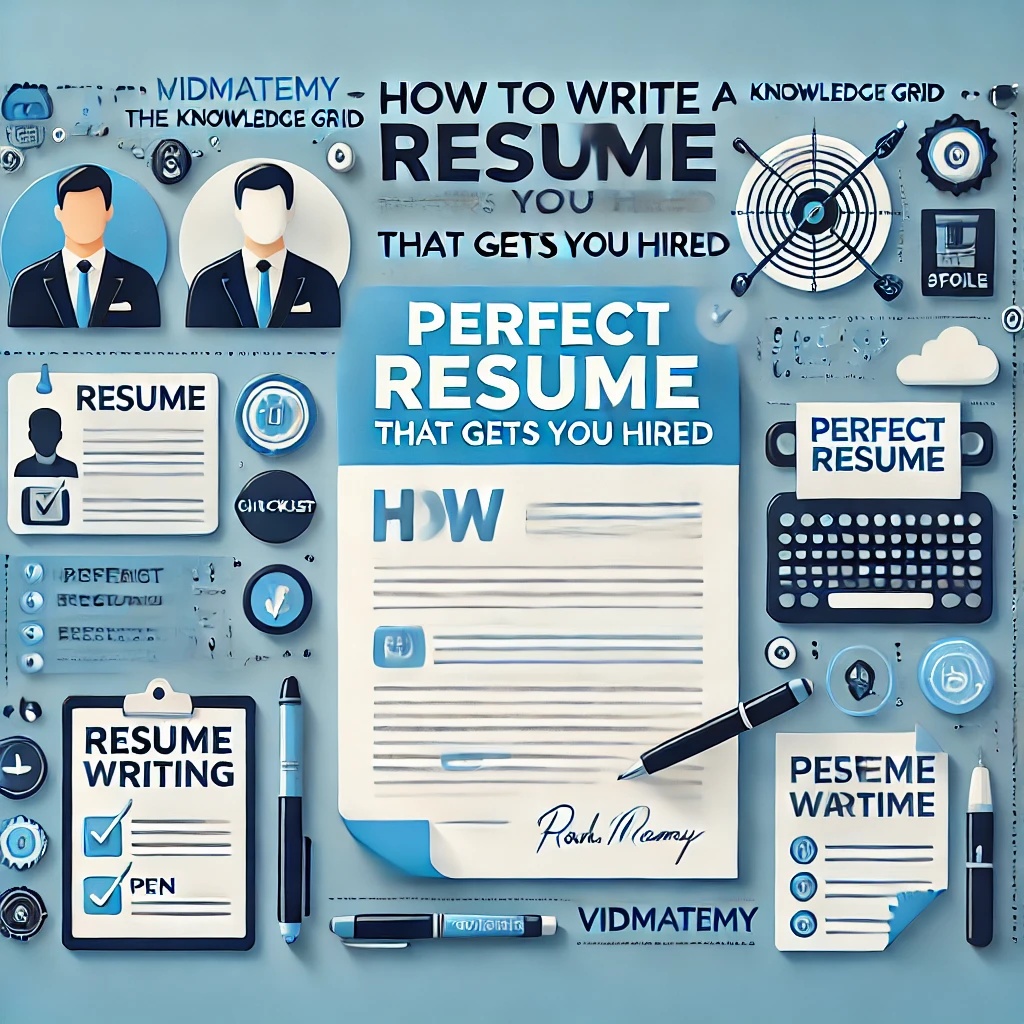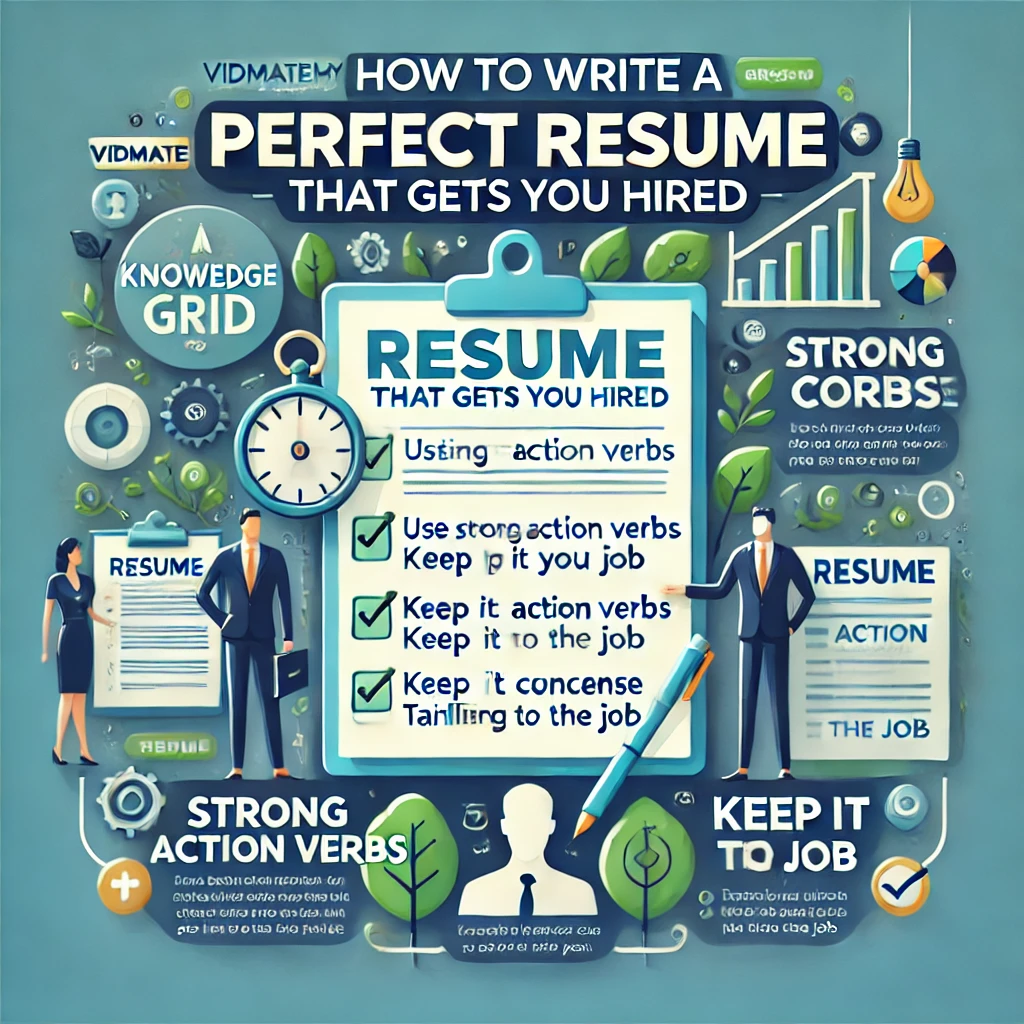How to Write a Perfect Resume That Gets You Hired
A resume is your first impression on potential employers, and a well-crafted one can significantly improve your chances of landing your dream job. Whether you’re a fresh graduate or an experienced professional, understanding how to structure and optimize your resume is crucial. This guide will walk you through the key elements of a winning resume and best practices to make it stand out.
- Chronological Resume – Lists your work experience in reverse order, best for professionals with a solid work history.
- Functional Resume – Focuses on skills and accomplishments rather than work history, ideal for career changers or those with gaps in employment.
- Combination Resume – Blends both chronological and functional elements, great for professionals with a mix of experience and skills.
- Contact Information – Include your full name, phone number, email, and LinkedIn profile.
- Professional Summary – A brief 2-3 sentence introduction that highlights your experience, skills, and career goals.
- Work Experience – List your past jobs with details on responsibilities and achievements.
- Skills – Highlight both technical and soft skills relevant to the job.
- Education – Mention your degrees, certifications, and relevant coursework.
- Additional Sections (Optional) – Include certifications, volunteer work, projects, or language skills if relevant.
- Use keywords from the job posting to pass applicant tracking systems (ATS).
- Highlight achievements with measurable results (e.g., “Increased sales by 30% in six months”).
- Focus on relevant experience instead of listing every job you’ve had.
- Keep it concise – a one-page resume is ideal for most applicants.
- Use clear, legible fonts like Arial, Calibri, or Times New Roman (size 11-12).
- Keep margins at 0.5 to 1 inch for readability.
- Use bullet points to highlight key achievements.
- Avoid graphics or excessive colors that can distract recruiters.
- Ensure consistent spacing and alignment for a neat appearance.
- Save your resume as a PDF to maintain formatting when submitting online.
- Spelling and Grammar Errors – Always proofread and use spell-check tools.
- Using a Generic Resume – Customize each resume for the job you’re applying for.
- Listing Duties Instead of Achievements – Focus on measurable results and contributions.
- Overloading with Information – Keep it concise and relevant to the job.
- Not Including Keywords – ATS systems scan resumes for relevant terms; make sure to optimize yours.
Structure Your Resume for Impact
Your resume is your first impression — make it count. Recruiters often skim resumes in less than 10 seconds, so it’s crucial to have a clean, professional, and organized structure. Start with your name and contact details at the top: phone number, email, LinkedIn profile (and portfolio link if relevant).
Next, write a short professional summary — 2–3 lines that highlight your experience, strengths, and what you bring to the table. Avoid vague statements like “hardworking” or “team player.” Instead, say something like:
“Digital marketing specialist with 3+ years of experience in SEO, Google Ads, and campaign analytics. Proven record of increasing organic traffic by 60% within 6 months.”
Your resume should include these key sections:
-
Work Experience: Start from the most recent job. Mention company name, role, duration, and key achievements — use bullet points and action verbs like “Led,” “Created,” “Achieved.”
-
Education: Degree, university, and graduation year.
-
Skills: Include both technical (e.g., Excel, Figma) and soft skills (e.g., communication, problem-solving).
-
Certifications & Projects: Highlight anything relevant that strengthens your profile.
Tailor, Polish & Beat the Bots
A generic resume won’t get you noticed. Instead, customize your resume for each job you apply to. Read the job description carefully and mirror its keywords and language. This helps you pass the Applicant Tracking System (ATS) — software that many companies use to filter resumes.
Use a clean format: avoid fancy fonts, colors, or tables that may confuse the ATS. Stick to standard headings and keep the layout easy to scan.
Check for grammar and spelling mistakes — even one typo can ruin your chances. Use tools like Grammarly or ask a friend to proofread.
Bonus tips:
-
Keep your resume to 1 page (2 pages max if experienced)
-
Quantify achievements (e.g., “Boosted sales by 20%”)
-
Save and send as PDF, not Word Doc (unless asked)
Conclusion
Writing a perfect resume requires a combination of strong content, proper formatting, and customization for each job application. By following these best practices, you can create a compelling resume that grabs attention and gets you hired.
For more job search and career advice, visit VIDMATEMY – The Knowledge Grid.



Leave a Reply